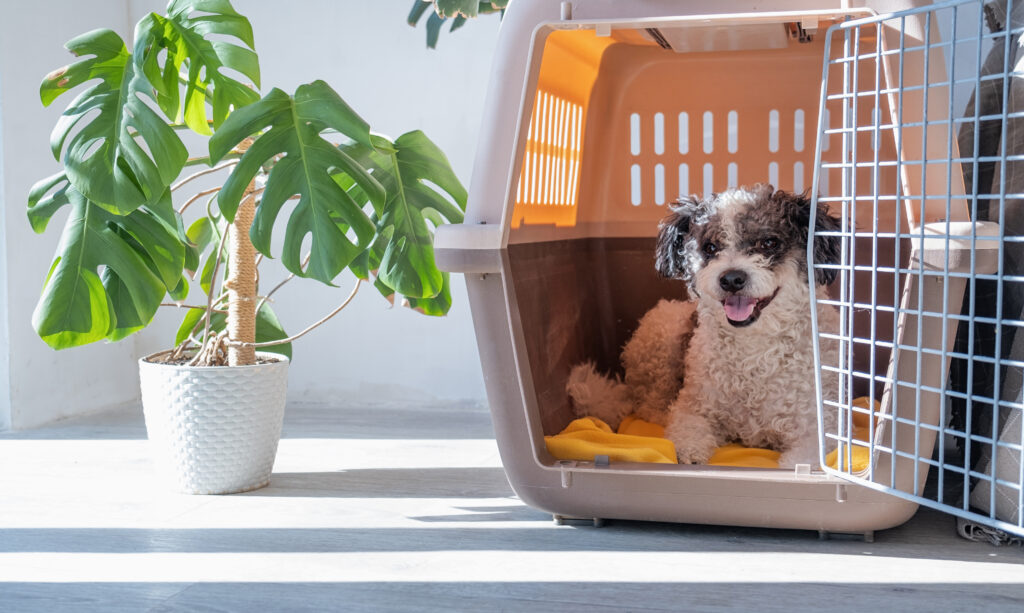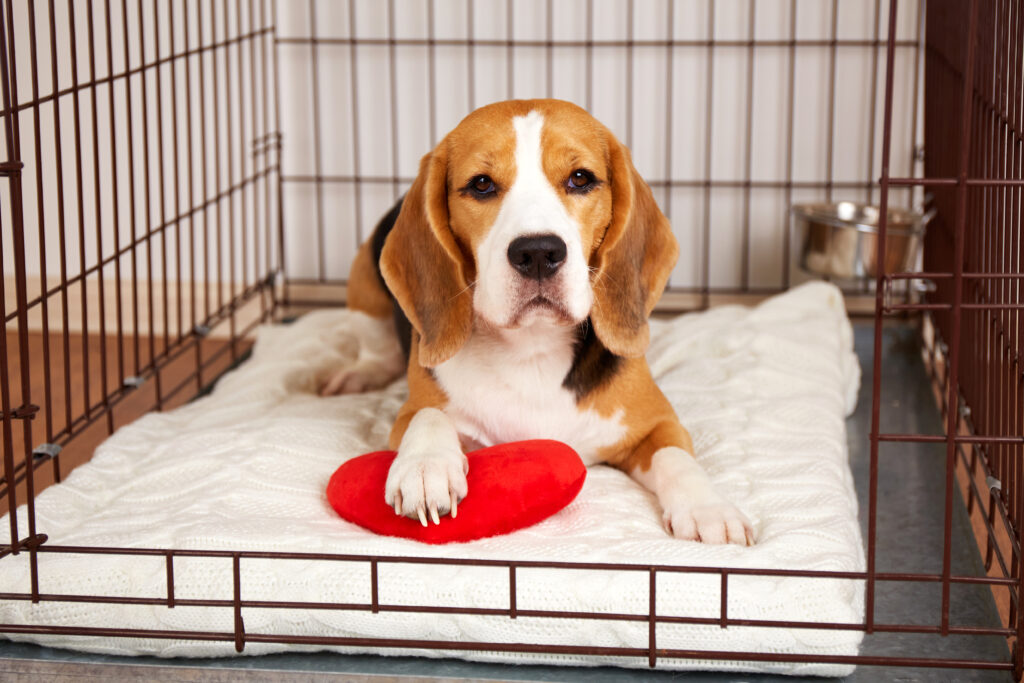Bringing a rescue dog into your home is an incredibly rewarding experience. But, as any seasoned pet parent will tell you, it comes with its fair share of challenges. One of the most important skills you can teach your new furry friend is to feel safe and secure in a crate. Knowing how to crate train a rescue dog can make the transition smoother for you and your new four-legged friend. Crate training isn’t just about confinement—it’s about providing a safe space where your dog can feel at ease. With love, patience, and the right approach, you can transform the crate into a place of comfort and safety, helping your rescue dog adjust to life in their new home.
Choose the Right Crate
The first step in crate training is choosing the right crate for your dog. The size of the crate is critical—it should be large enough for your dog to stand, turn around, and lie down comfortably, but not so big that they feel lost or decide to use one corner as a bathroom.
There are different types of crates to consider: wire crates, which provide visibility and ventilation; plastic crates, which offer a cozier, den-like feel; and fabric crates, which are lightweight but may not be suitable for chewers. For many rescue dogs, especially those with anxiety, a plastic crate with a covered top can feel more secure and less overwhelming.
When selecting a crate, prioritize comfort and safety. A crate that feels more like a cozy den than a cage will help your rescue dog adjust faster.
Make It Inviting
Once you’ve picked the right crate, the next step is to make it as inviting as possible. Add soft bedding, a blanket, or even a shirt that smells like you to create a comforting space. Familiar scents can work wonders in soothing your dog and making them feel at home.
Include a few favorite toys or long-lasting chews inside the crate to make it more appealing. Puzzle toys stuffed with treats can also help keep your dog entertained and create a positive association with the crate.
The crate’s location is just as important as what’s inside it. Place the crate in a quiet part of your home where your dog can still feel part of the family. This balance helps your rescue dog feel included without being overwhelmed.
Start Slowly
Rescue dogs often have unknown past experiences, so it’s essential to introduce the crate gradually. Start by leaving the crate door open and allowing your dog to explore it on their own. Toss a few treats inside to encourage them to step in.
Begin with short, positive sessions. For example, have your dog sit in the crate for just a few minutes while you’re nearby. Gradually increase the time as they become more comfortable. Rushing the process can cause stress or anxiety, so let your dog set the pace.

Reward Calm Behavior
Positive reinforcement is your best friend when crate training a rescue dog. Reward your dog for calm and relaxed behavior in or around the crate. Treats, gentle praise, and even belly rubs can reinforce the idea that the crate is a good place to be.
It’s also important to wait for quiet moments before letting your dog out of the crate. If your dog is barking or whining, giving in and opening the door can teach it that making noise gets it what it wants. Instead, reward it when it’s calm, showing that good behavior leads to positive outcomes.
Avoid Punishment
Never use the crate as a form of punishment. This can create fear and anxiety around the crate, making the training process much harder. The crate should always be associated with positive experiences and comfort, never fear or isolation.
If your dog is acting out, redirect their energy with toys or training exercises instead of sending them to the crate. Building trust is especially important for rescue dogs, as many may have experienced negative treatment in the past.
Build Positive Associations
Creating positive associations with the crate is key to successful training. One effective way to do this is by feeding your dog their meals in the crate. This simple act links the crate to something they enjoy, making it a place of comfort and reward.
You can also reserve special treats or toys for crate time. For example, give your dog a long-lasting chew or a stuffed puzzle toy only when they’re in the crate. This exclusive reward system makes the crate even more appealing.
Another fun training technique is to play the “crate game.” Toss a treat into the crate and encourage your dog to go inside to retrieve it. Praise them enthusiastically when they do. Over time, this builds a strong, positive connection between the crate and happy experiences.

Dog Training at Beau’s K9 Academy
How to crate train a rescue dog is all about patience, compassion, and creating positive experiences. It can be challenging, but you don’t have to do it alone. At Beau’s K9 Academy, we specialize in working with rescue dogs and understanding their unique needs. Our trainers use compassionate, proven methods to help dogs build trust, overcome fears, and thrive in their new homes.
Whether your dog is anxious, shy, or simply new to crate training, we offer a variety of dog training services. Our team can create personalized training to make the process smoother for you and your pup. Crate training is just one part of building a happy and well-adjusted pet, and we’re here to guide you every step of the way. Contact us today!
How to Crate Train a Rescue Dog – FAQs
How long does it take to crate train a rescue dog?
It depends on the dog’s past experiences and temperament. Some dogs adjust in a few days, while others may take weeks. Patience and consistency are key.
What type of crate is best for a rescue dog?
A plastic crate with solid sides often feels safer for anxious dogs, while wire crates offer more visibility. Choose one large enough for your dog to stand, turn, and lie down.
How do I stop my rescue dog from crying in the crate?
Avoid letting them out while they’re whining. Instead, wait for calm moments, then reward them. Try using comforting items like a soft blanket, chew toys, or a shirt with your scent.
Can I use the crate as punishment if my rescue dog misbehaves?
No, never use the crate as punishment. It should be a safe, positive space. Punishment can create fear and anxiety around the crate.
Can older rescue dogs be crate trained?
Yes, older rescue dogs can be crate trained. It may take longer than with puppies, but gradual exposure, patience, and positive reinforcement make it possible.
How can Beau’s K9 Academy help with crate training?
Beau’s K9 Academy offers personalized training for rescue dogs focusing on trust-building, positive associations, and overcoming anxiety for a smooth crate training experience.

